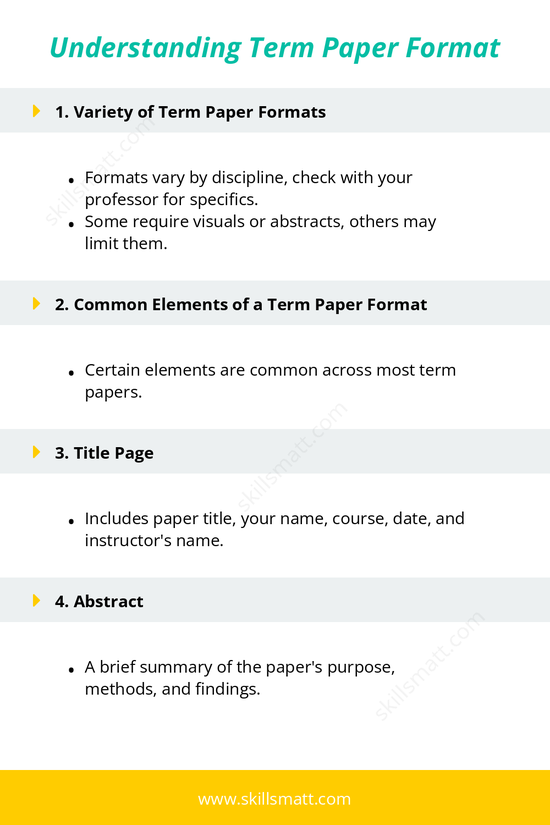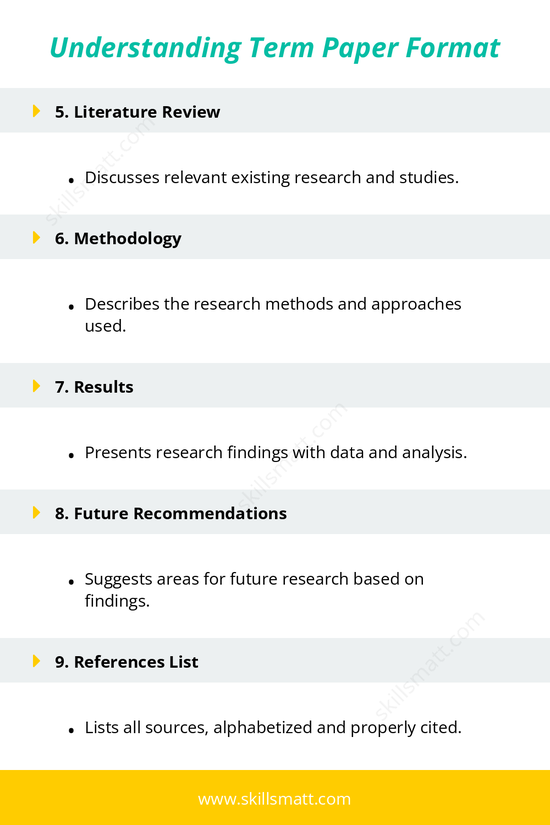Understanding Term Paper Format
Term papers follow a specific format to ensure clarity, organization, and academic rigor. Different disciplines might have unique requirements, but certain core elements are common across most term papers. Here’s an overview of the typical sections and structure found in a term paper.
1. Variety of Term Paper Formats
- Formats vary by discipline, check with your professor for specifics: Different fields have specific requirements for term paper formatting. It’s essential to clarify any unique expectations with your professor before you start writing.
- Some require visuals or abstracts, others may limit them: Some disciplines, such as the sciences, may require visual elements like graphs or charts, while others, like literature, may focus more on textual analysis and argumentation. Be sure to understand these specifics.
2. Common Elements of a Term Paper Format
- Certain elements are common across most term papers: No matter the discipline, most term papers follow a standard structure that includes the title page, abstract, introduction, body, conclusion, and references list.
3. Title Page
- Includes paper title, your name, course, date, and instructor's name: The title page is the first impression your paper will make. Ensure that it’s formatted according to your institution’s requirements, typically including the title, your name, the course name, the professor’s name, and the date.
4. Abstract
- A brief summary of the paper's purpose, methods, and findings: The abstract serves as a concise summary of your entire paper, providing the reader with an overview of the research problem, methods, findings, and conclusions.
5. Literature Review
- Discusses relevant existing research and studies: The literature review highlights the key research and theories that relate to your topic. It provides context for your study by reviewing previous works and positioning your research within the existing body of knowledge.
6. Methodology
- Describes the research methods and approaches used: This section outlines the methodology you used for gathering data or conducting your research. It explains how you conducted your study and the rationale behind your methods.
7. Results
- Presents research findings with data and analysis: In the results section, you present the data you collected, usually accompanied by relevant analysis, charts, or tables.
8. Future Recommendations
- Suggests areas for future research based on findings: This section looks forward by identifying areas where further research could be beneficial, either to explore unanswered questions or to extend your findings.
9. References List
- Lists all sources, alphabetized and properly cited: A complete list of all the references you cited in your paper. This section ensures that you give proper credit to the authors and sources whose work you referenced in your research.


